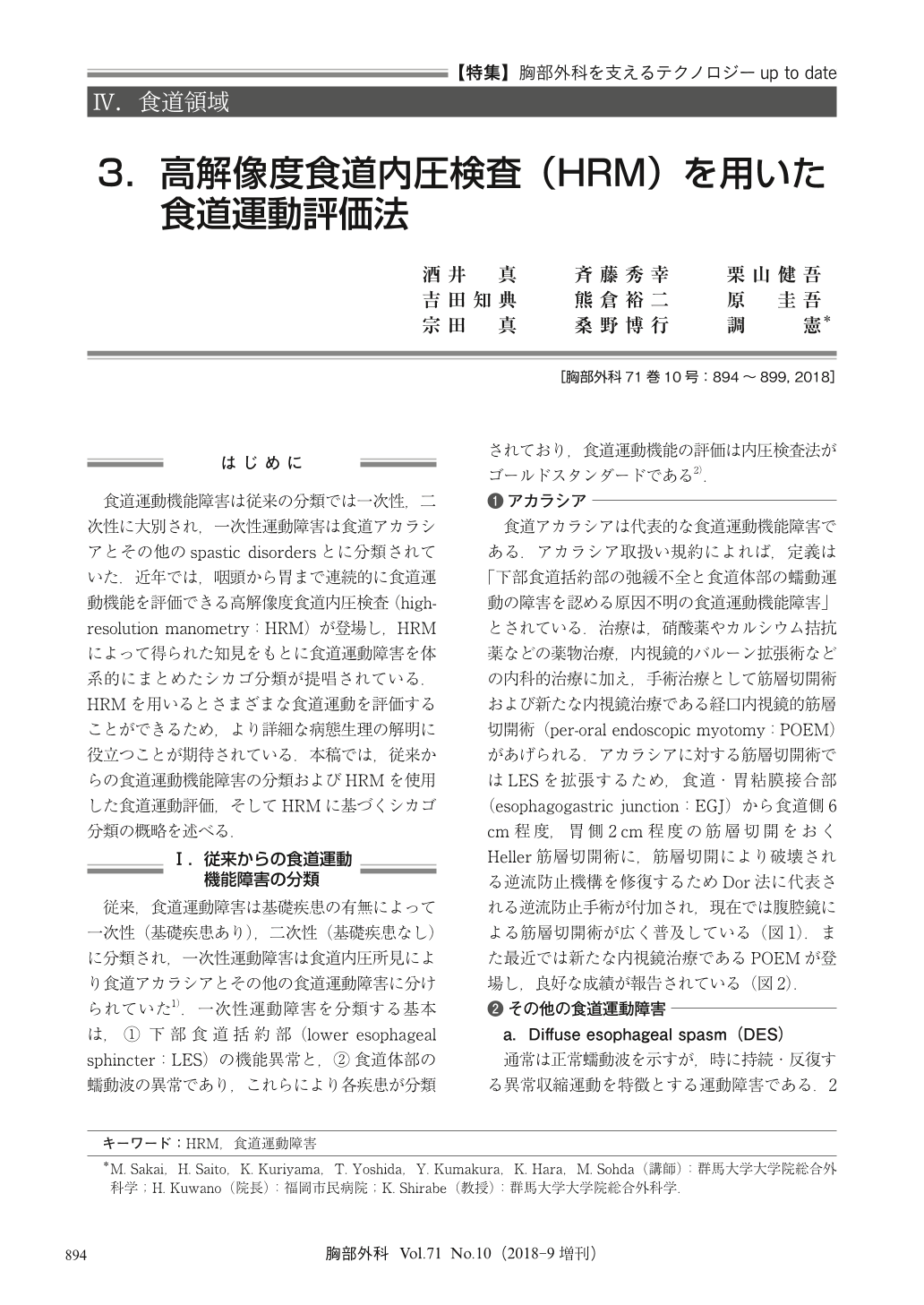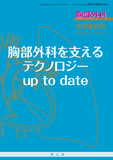Japanese
English
- 有料閲覧
- Abstract 文献概要
- 1ページ目 Look Inside
- 参考文献 Reference
食道運動機能障害は従来の分類では一次性,二次性に大別され,一次性運動障害は食道アカラシアとその他のspastic disordersとに分類されていた.近年では,咽頭から胃まで連続的に食道運動機能を評価できる高解像度食道内圧検査(high-resolution manometry:HRM)が登場し,HRMによって得られた知見をもとに食道運動障害を体系的にまとめたシカゴ分類が提唱されている.HRMを用いるとさまざまな食道運動を評価することができるため,より詳細な病態生理の解明に役立つことが期待されている.本稿では,従来からの食道運動機能障害の分類およびHRMを使用した食道運動評価,そしてHRMに基づくシカゴ分類の概略を述べる.
High-resolution manometry (HRM) has significant contribution in the field of esophageal motility disorders recently. The development of HRM has categorized various esophageal motility disorders focusing on patterns of esophageal motor function. Additionally, the Chicago classification criteria are widely used for manometric diagnosis. HRM provides functional imaging of the esophagus. HRM has closely spaced pressure sensors and displays pressure variations as pressure topography plots. In the analysis of HRM according to the Chicago classification, a hierarchical categorization of motility disorders is made after evaluation of the individual swallow patterns. First the lower esophageal sphincter (LES) function, and subsequently the esophageal pressure patterns are used to make a diagnosis. The hierarchical flow-chart has 4 groups;①incomplete LES relaxation (achalasia or esophagogastric junction outflow obstruction), ②major motility disorders, ③minor motility disorders, ④normal esophageal motility. HRM is the gold standard for diagnosis of esophageal motility disorders.

© Nankodo Co., Ltd., 2018


